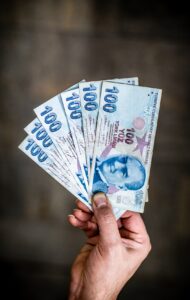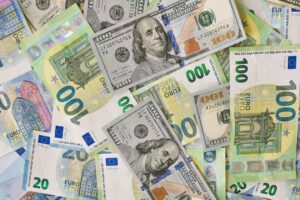How to Calculate Leverage in Forex Trading: An In-Depth Example
Leverage is a key concept in forex trading that allows traders to amplify their trading positions. It is essentially a loan provided by the broker to the trader, enabling the trader to control larger positions with a smaller amount of capital. However, leverage can be a double-edged sword, as it can magnify both profits and losses. Therefore, it is crucial for forex traders to understand how to calculate leverage and use it wisely. In this article, we will provide an in-depth example of how to calculate leverage in forex trading.
Leverage is typically expressed as a ratio, such as 1:50 or 1:100. This ratio represents the amount of capital that a trader can control in relation to their initial investment. For example, a leverage ratio of 1:50 means that for every $1 of the trader’s capital, they can control $50 in the forex market.
To calculate the leverage, you need to know the total value of your trading position and the amount of capital you are willing to invest. Let’s say you have $10,000 in your trading account and you want to open a position on the EUR/USD currency pair. The current exchange rate is 1.1000, and you want to buy 10,000 units of the EUR/USD.
To calculate the total value of your position, you multiply the number of units by the exchange rate. In this case, 10,000 units multiplied by 1.1000 equals $11,000. This is the total value of your position.
Now, to calculate the leverage, you divide the total value of your position by your capital. In this example, $11,000 divided by $10,000 equals 1.1. This means that your leverage ratio is 1.1:1.
However, leverage is usually expressed as a ratio, such as 1:50 or 1:100. To convert the leverage ratio from a decimal to a fraction, you subtract 1 from the decimal and multiply by 100. In this example, 1.1 minus 1 equals 0.1, and 0.1 multiplied by 100 equals 10. Therefore, the leverage ratio is 1:10.
This means that for every $1 of your capital, you can control $10 in the forex market. So, with a capital of $10,000, you can control a position of $110,000 ($10,000 multiplied by 10).
Leverage allows traders to increase their potential profits, but it also increases the risk of losses. In this example, if the exchange rate of the EUR/USD currency pair moves against your position by 1%, you would lose $1,100 ($110,000 multiplied by 1%).
It is important to note that leverage can also work in your favor. If the exchange rate moves in your favor by 1%, you would make a profit of $1,100. This is why leverage can be a powerful tool for traders, as it allows them to make significant gains with a relatively small amount of capital.
However, it is crucial to use leverage wisely and manage your risk effectively. It is recommended to only use a leverage ratio that you are comfortable with and to always set stop-loss orders to limit potential losses.
In conclusion, leverage is a fundamental concept in forex trading that allows traders to control larger positions with a smaller amount of capital. To calculate leverage, you need to know the total value of your position and your capital. By understanding how to calculate leverage and using it wisely, forex traders can maximize their potential profits while effectively managing their risk.






